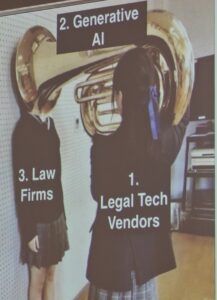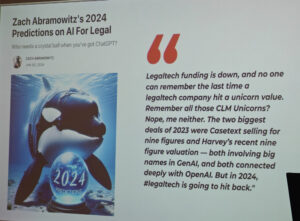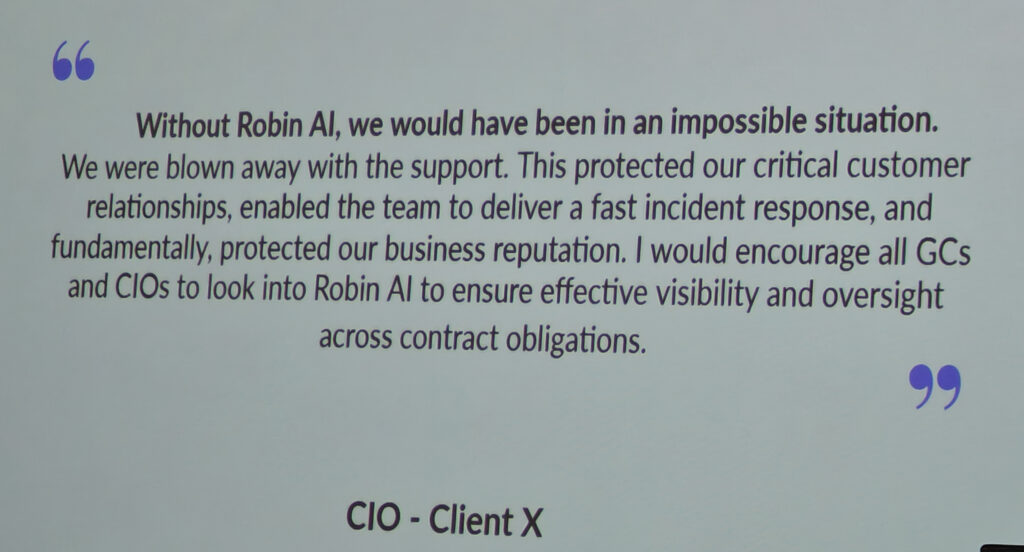
The recent Legal Innovation Conference in London, organized by Richard Tromans of Artificial Lawyer and Cosmonauts, highlighted the transformative potential of artificial intelligence (AI) in the legal industry. The discussions underscored that legal tech’s current boom is driven largely by advancements in AI, particularly generative AI (gen AI), and renewed interest from investors. With adoption and funding on the rise, legal professionals are navigating the challenges and opportunities of integrating AI into everyday practice.
(This illustration is from the presentation by Maged Helmy of Newcode AI.)
Explosive Growth in Gen AI Adoption: In-House Teams Leading the Way
Since mid-2023, the use of gen AI in legal has nearly doubled, jumping from 39% to 82%, according to LexisNexis data shared by Matthew Leopold. Interestingly, in-house teams are leading adoption, with 57% already implementing gen AI compared to 43% of law firms. The benefits for in-house teams are clear: 81% report that AI helps them work faster, 64% view it as a competitive advantage, and 61% say it enhances client service. For many, gen AI’s potential in automating document review, data extraction, translation, drafting, and knowledge search is invaluable.
Why Legal Tech is “SO Back”: Funding Rebounds in 2024
After the legal tech funding downturn of 2022-2023, VC interest in legal tech is back on the rise. Zach Abrahamowitz from Killer Whale Strategies highlighted the return of VC funding in 2024, pointing to Harvey AI’s $100 million funding round as evidence of AI’s viability in the legal sector. The rise in funding shows that more people now understand that AI-driven solutions are now mature enough to solve specific legal challenges, making legal services one of the professional sectors likely to be most significantly impacted by AI.
Zach Abrahamowitz from Killer Whale Strategies highlighted the return of VC funding in 2024, pointing to Harvey AI’s $100 million funding round as evidence of AI’s viability in the legal sector. The rise in funding shows that more people now understand that AI-driven solutions are now mature enough to solve specific legal challenges, making legal services one of the professional sectors likely to be most significantly impacted by AI.
Law Firms’ Conservative Approach vs. In-House Experimentation
While law firms are cautious, focusing on AI policies and training, in-house legal teams are jumping straight into practical business cases. Many law firms struggle to identify clear use cases and measure return on investment (ROI), which limits their AI integration pace. In contrast, in-house teams are testing AI’s practical value directly with tangible applications.
During the coffee break, one in-house counsel shared an example of how their team took a practical approach to AI adoption. After a workshop showcasing gen AI applications, in-house lawyers brainstormed potential AI-driven business cases. This collaborative exercise allowed the team to identify and prioritize five promising cases, providing a clear and practical starting point to kickstart AI adoption.

The event is also about networking. It gave me an opportunity to reconnect with old acquaintances, such as Rory O’Keeffe of RMOK Legal.
Examples of AI in Legal Practice: From Due Diligence to Data Breach Response
The conference highlighted specific AI applications already transforming legal tasks, including solutions from Xapien and Robin AI:
Xapien: This AI-powered due diligence tool allows legal professionals to analyze individuals and entities quickly, revealing upstream ownership structures and potential risk indicators. With user-friendly capabilities that don’t require prompts, Xapien enables users to ask direct questions—such as identifying connections to specific individuals or assessing reputational risks—allowing for a more efficient and proactive approach to due diligence of people and legal entities. (Presented by Nick Morgan from Xapien.)
entities quickly, revealing upstream ownership structures and potential risk indicators. With user-friendly capabilities that don’t require prompts, Xapien enables users to ask direct questions—such as identifying connections to specific individuals or assessing reputational risks—allowing for a more efficient and proactive approach to due diligence of people and legal entities. (Presented by Nick Morgan from Xapien.)
Robin AI: Robin AI is designed for large-scale document analysis, exemplified by a case (presented by Ryan Heath) where it assisted a client facing a cybersecurity incident. The client needed to understand contractual obligations across 9,000 customer contracts swiftly, a task Robin AI completed in under 24 hours. This rapid, automated document review enabled the client to respond to the incident, comply with notification requirements, and preserve customer relationships, resulting in a 93% time savings. Robin AI’s solution can be delivered as a managed service, pairing software with legal expertise to offer a unique, full-service approach.
assisted a client facing a cybersecurity incident. The client needed to understand contractual obligations across 9,000 customer contracts swiftly, a task Robin AI completed in under 24 hours. This rapid, automated document review enabled the client to respond to the incident, comply with notification requirements, and preserve customer relationships, resulting in a 93% time savings. Robin AI’s solution can be delivered as a managed service, pairing software with legal expertise to offer a unique, full-service approach.
These examples highlight how tailored AI solutions can efficiently solve well defined problems, delivering measurable business impact.
Bridging the Skills Gap: Training for a Tech-Driven Legal Era
 While AI’s technical capabilities are advancing, effective adoption depends on upskilling legal professionals. Laura Hodgson
While AI’s technical capabilities are advancing, effective adoption depends on upskilling legal professionals. Laura Hodgson from Linklaters noted the urgent need for training to fill a skills gap within law firms, where traditional skill sets often don’t align with AI’s full potential. Addressing this gap involves engaging external expertise to guide legal teams in adopting a tech-forward mindset. The conclusion is clear: successful AI integration requires investing in people, not just technology.
from Linklaters noted the urgent need for training to fill a skills gap within law firms, where traditional skill sets often don’t align with AI’s full potential. Addressing this gap involves engaging external expertise to guide legal teams in adopting a tech-forward mindset. The conclusion is clear: successful AI integration requires investing in people, not just technology.
A promising initiative in Sweden is underway to address this very issue—a network within legal tech is forming to support training and transformation within the Swedish legal sector. Such networks could play a crucial role in helping the legal profession stay competitive and adaptive in an increasingly AI-driven era.
Key Takeaways
- AI-Driven Transformation is Underway: With rising gen AI adoption and specific AI tools already reshaping workflows, the legal sector is embracing a new tech-driven future. The practical applications highlighted at the conference show AI’s real-world impact and scalability potential.
- In-House Teams Lead the Change: In-house legal teams are quicker to identify business cases and adapt AI solutions for practical needs, while law firms face challenges in aligning AI investments with clear ROI. This divide may indicate that future AI advancements will be shaped more by in-house innovation than traditional law firm structures.
- VC Funding Signals Strong Industry Interest: Legal tech’s resurgence in funding, with substantial investments like that of Harvey AI, signals renewed confidence in the sector’s growth potential. AI is attracting attention not only as a technological advancement but as a high-value industry vertical.
- Training and Adoption Must Go Hand in Hand: As tech adoption grows, so too does the need for upskilling. Firms that prioritize training will likely see smoother and more effective AI integration, equipping their people with the right skills to leverage these tools fully.
As the legal industry steps into a tech-forward era, the focus on both human expertise and targeted AI solutions will be crucial. The Legal Innovation conference confirmed that AI is not just a trend but an essential element of the modern legal landscape—one that law firms and in-house teams alike must navigate thoughtfully to unlock its full potential.


